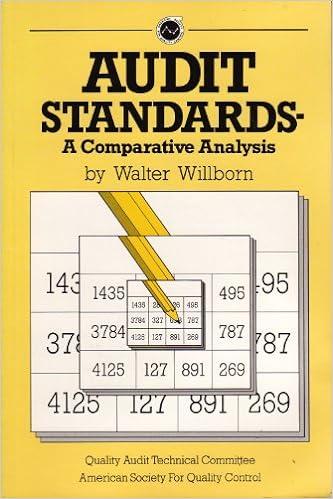Answered step by step
Verified Expert Solution
Question
1 Approved Answer
Please answer and explain all parts (a, b, c and d). Pie Corporation acquired 75 percent of Slice Company's ownership on January 1,208, for $114,000.









Please answer and explain all parts (a, b, c and d).
Pie Corporation acquired 75 percent of Slice Company's ownership on January 1,208, for $114,000. At that date, the fair value of the noncontrolling interest was $38,000. The book value of Slice's net assets at acquisition was $100,000. The book values and fair values of Slice's assets and liabilities were equal, except for Slice's buildings and equipment, which were worth \$20,000 more than book value. Accumulated depreciation on the buildings and equipment was $30,000 on the acquisition date. Buildings and equipment are depreciated on a 10-year basis. Although goodwill is not amortized, the management of Pie concluded at December 31, 20X8, that goodwill from its purchase of Slice shares had been impaired and the correct carrying amount was $2,500. Goodwill and goodwill impairment were assigned proportionately to the controlling and noncontrolling shareholders. No additional impairment occurred in 209. Trial balance data for Pie and Slice on December 31, 20X9, are as follows: Required: a. Record all consolidation entries needed to prepare a three-part consolidation worksheet as of December 31, 20X9. (If no entry is required for a transaction/event, select "No journal entry required" in the first account field.) Consolidation Worksheet Entries Record the basic consolidation entry. Note: Enter debits before credits. Consolidation Worksheet Entries Record the amortized excess value reclassification entry. Note: Enter debits before credits. Consolidation Worksheet Entries A Record the excess value (differential) reclassification entry. Note: Enter debits before credits. Consolidation Worksheet Entries A B Record the optional accumulated depreciation consolidation entry. Note: Enter debits before credits. b. Prepare a three-part consolidation worksheet for 20X9. (Round your answers to the nearest dollar amount. Values in the first two columns (the "parent" and "subsidiary" balances) that are to be deducted should be indicated with a minus sign, while all values in the "Consolidation Entries" columns should be entered as positive values. For accounts where multiple adjusting entries are required, combine all debit entries into one amount and enter this amount in the debit column of the worksheet. Similarly, combine all credit entries into one amount and enter this amount in the credit column of the worksheet.) c. Prepare a consolidated balance sheet, income statement, and retained earnings statement for 20X9. (Round your answers to the nearest dollar amount. Amounts to be deducted should be indicated with a minus sign.) \begin{tabular}{|l|l|l|} \hline \multicolumn{2}{|c|}{ PIE CORPORATION AND SUBSIDIARY } \\ \multicolumn{1}{|c|}{ Consolidated Income Statement } \\ \multicolumn{1}{|c|}{ Year Ended December 31, 20X9 } \\ \hline Sales & & \\ \hline Cost of goods sold & & \\ \hline Wage expense & & \\ \hline Depreciation expense & & \\ \hline Interest expense & & \\ \hline Other expenses & & \\ \hline \hline & & \\ \hline Total expenses & & \\ \hline Consolidated net income & & \\ \hline Income to noncontrolling interest & & \\ \hline Income to controlling interest & & \\ \hline \end{tabular} \begin{tabular}{|l|l|} \hline \multicolumn{2}{|c|}{ PIE CORPORATION AND SUBSIDIARY } \\ \hline \multicolumn{1}{|c|}{ Consolidated Retained Earnings Statement } \\ \hline \multicolumn{1}{|c|}{ Year Ended December 31, 20X9 } \\ \hline Retained Earnings, January 1, 20X9 & \\ \hline Income to Controlling Interest, 20X9 & \\ \hline & \\ \hline Dividends Declared, 20X9 & \\ \hline Retained Earnings, December 31, 20X9 \\ \hline \end{tabular}Step by Step Solution
There are 3 Steps involved in it
Step: 1

Get Instant Access to Expert-Tailored Solutions
See step-by-step solutions with expert insights and AI powered tools for academic success
Step: 2

Step: 3

Ace Your Homework with AI
Get the answers you need in no time with our AI-driven, step-by-step assistance
Get Started


